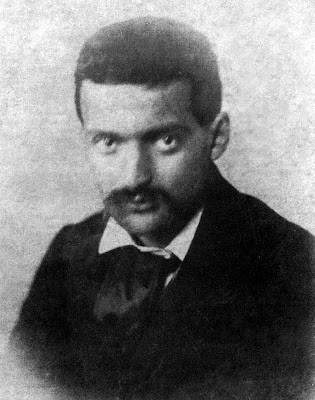Paul Cézanne1 January 19, 1839 – October 22, 1906
In a letter dated a year or so before his death Cezanne wrote: "I am too old; I have not realized; I shall not realize now. I remain the primitive of the way which I have discovered." What the way was is summarized by his artist-friend, Emile Bernard, as "a bridge, thrown across conventional routine, by which impressionism may return to the Louvre and to the life profound."
Cezanne was born at Aix in Provence in 1839. Among his college friends was Zola with whom he shared a taste for literature and entered into rivalry in prose and poetic compositions. It was not until he visited Paris and was introduced by Zola to Courbet and Manet that his thoughts turned to painting. Soon, in favor of the latter, he renounced all other interests and settled down to that concentrated and patient study of nature and art which dominated the remainder of his life.
He passed through a period of absorbing the influence of others; by turns Delacroix, Daumier, Courbet and finally Manet, among whose followers he figured for a time conspicuously. Then he grew dissatisfied with impressionism and retired to Aix to prosecute his studies in seclusion. He ceased to exhibit and Paris had forgotten his existence, when in 1899 a number of his pictures appeared in the sale of his friend, M. Choquet's, collection. From this event dated his present reputation and the influence which he has exerted on Matisse and the still younger painters, who call him reverently, the Sage. He died at Aix in 1905.
 | Photography of Paul Cézanne, c. 1861. This image (or other media file) is in the public domain because its copyright has expired. This applies to the United States, where Works published prior to 1978 were copyright protected for a maximum of 75 years. See Circular 1 "COPYRIGHT BASICS" PDF. Works published before 1923, in this case 1901, are now in the public domain. See page for author [Public domain], via Wikimedia Commons |
On the other hand the latter ceased to be a living expression with the passing of the life to which it had responded and the academic, classicalized attempt to perpetuate it artifically has resulted in "conventional routine." It was over this routine that Cezanne set himself to build a bridge, which should unite the throbbing life of to-day with the noble art of the past, and let some of the profound life of Classic art pass across into the art of the present.
No one will dispute the grandeur of the aim or the need of achieving it, if modern painting is ever to take rank not only with the great art of the past but also with the great works of the present in other departments of civilization.
Cezanne recognized that modern painting in its effort to recover greatness was debarred for the most part from one source of Italian grandeur. It could no longer ally itself to the sumptuousness of that life and reinforce itself with the superb illustration of Biblical and mythological lore. It was compelled to be the expression of a life whose main characteristic is a keen consciousness of actualities. The painter of to-day cannot soar into the clouds; he must occupy himself with the actual perceptions of things as they are. He can, however, save himself from banality by relying upon his sensations, aroused by the perceptions, and by giving to them a concrete form. This, in fact, was what impressionism had done.
TEXT CREDIT: The story of French painting













No comments:
Post a Comment